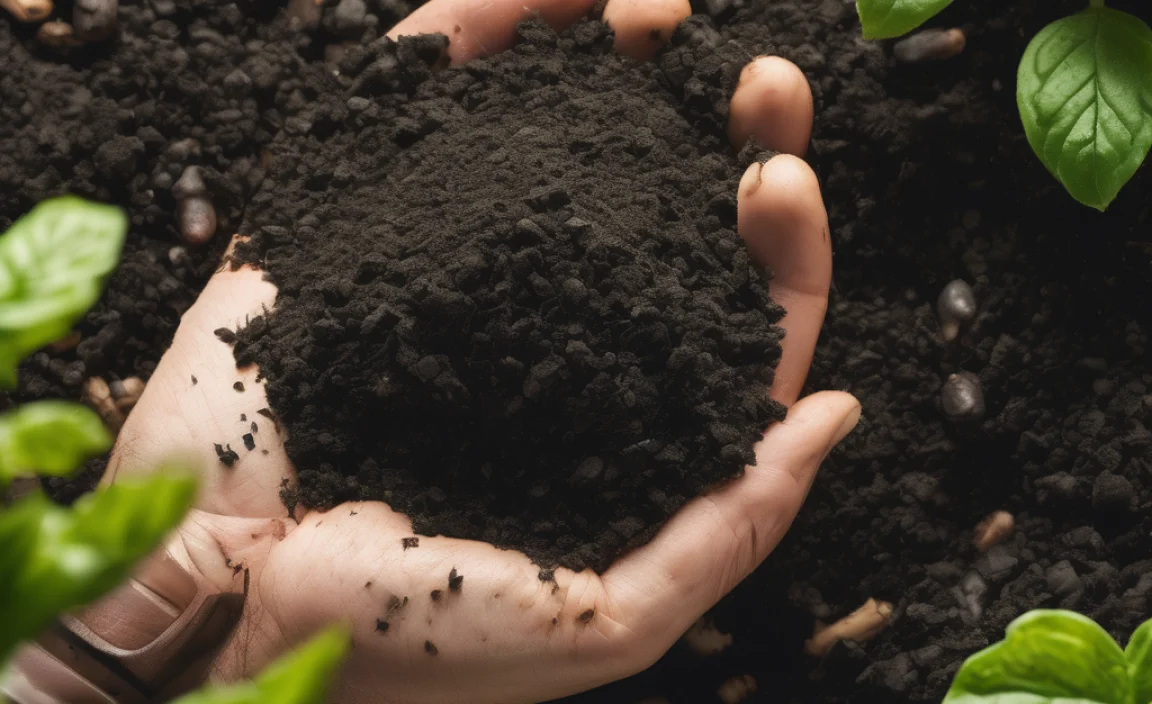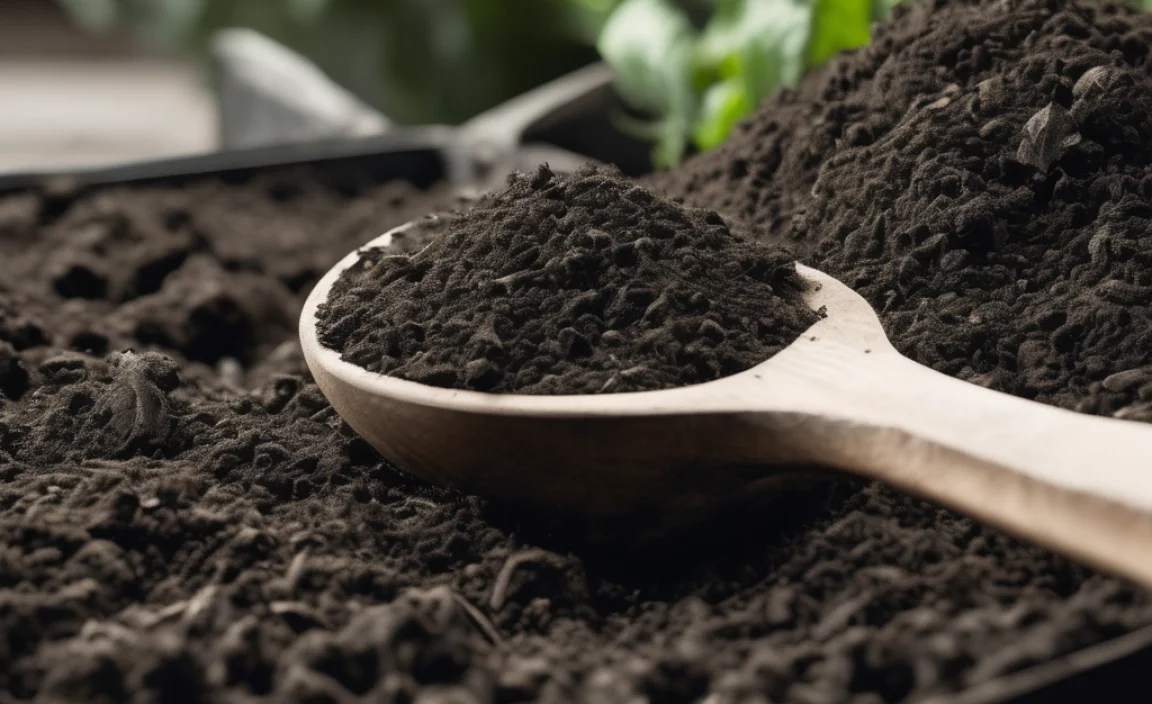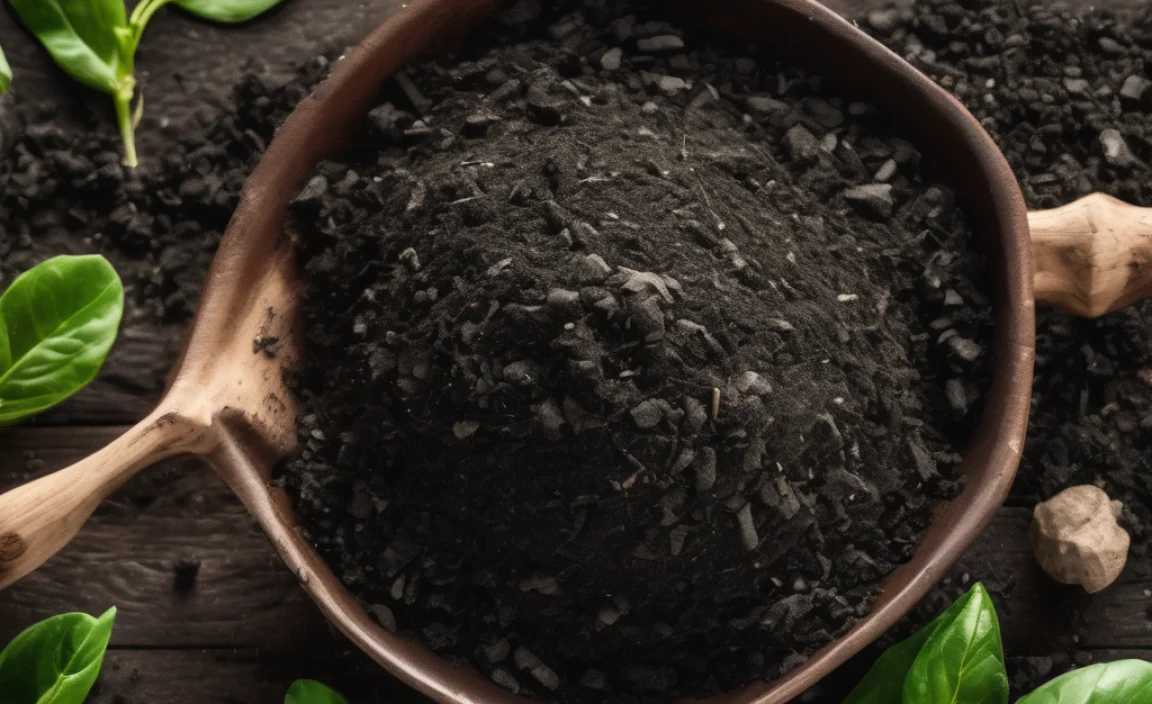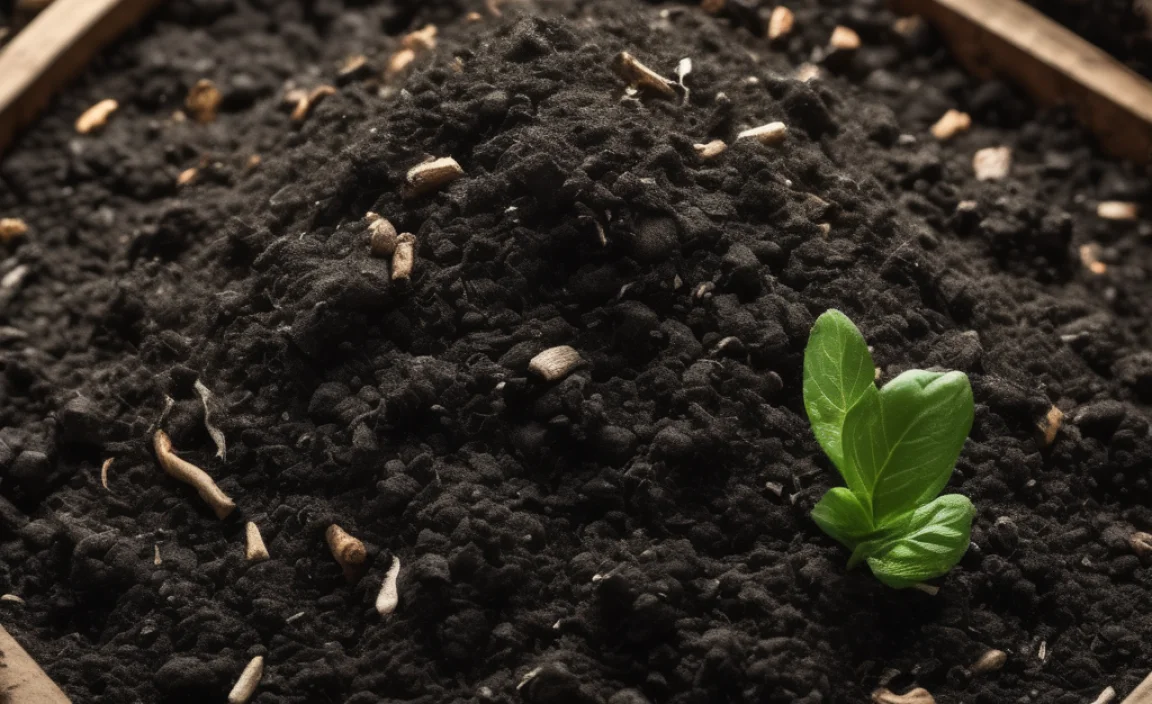Ever feel like your garden plants are just… not thriving? You’ve got the sunlight, the water, the love, but something’s missing. That something is often the good old-fashioned goodness of compost! But where do you get that amazing soil-builder? Buying compost fertilizer can feel like a puzzle, with so many options. Don’t worry, I’m here to help you find just the right supplier.
This guide will walk you through everything, from understanding what makes good compost to finding the best local and online sources. We’ll break down the confusing bits so you can get back to what you love – a beautiful, healthy garden!
Your Garden’s Best Friend: What is Compost Fertilizer?

Let’s chat about compost! It’s basically nature’s recycling program. When organic stuff like kitchen scraps (veggie peels, coffee grounds) and yard waste (leaves, grass clippings) breaks down, it turns into a rich, dark material called compost. Think of it as super-powered, natural fertilizer for your plants.
Why is it so great?
- Feeds Your Soil: Compost is packed with nutrients that plants love, helping them grow strong and healthy.
- Improves Soil Structure: It loosens up clay soil and helps sandy soil hold more water.
- Boosts Healthy Microbes: It encourages beneficial bacteria and fungi in your soil, which are like tiny helpers for your plants.
- Reduces Waste: Making or buying compost is a great way to keep food scraps and yard waste out of landfills.
When you buy it, you’re getting a finished product ready to mix into your garden beds, pots, or use as a top dressing. It’s a fantastic way to give your soil a nutrient boost without using harsh chemicals.
Why Buy Compost Fertilizer Instead of Making It?

Making your own compost is fantastic, and I highly encourage it if you have the space and time! But let’s be real, sometimes life gets busy. Buying compost fertilizer is a super convenient shortcut.
Here are a few reasons why buying might be the better choice for you right now:
- Time Saver: Making compost takes time – weeks, sometimes months, for it to fully mature. Buying it means you get it whenever you need it.
- Space Constraints: You might not have a big backyard or a suitable spot to set up a compost bin.
- Consistent Quality: Reputable suppliers know how to balance their compost ingredients and manage the decomposition process, often resulting in a more consistent, high-quality product than a beginner might achieve at home.
- Volume Needs: If you have a large garden or landscaping project, buying in bulk is much more practical than trying to create that much compost yourself.
- Specific Needs: Sometimes you need specialized compost, like worm castings (vermicompost) or compost for a specific type of plant, which might be easier to source from a supplier.
This guide is all about making it easy for you to get the compost you need, no matter your situation!
Finding the Right Compost Fertilizer Suppliers

So, you’ve decided to buy. Great! Now, where do you look? Compost fertilizer suppliers can be found in a few different places. Knowing your options is key to finding the best fit for your needs and budget.
1. Local Garden Centers and Nurseries
These are your go-to spots for all things gardening, and they almost always carry bagged compost. Many also sell bulk compost that you can pick up or have delivered.
- Pros: Convenient, you can often see the product, knowledgeable staff can offer advice.
- Cons: Can be more expensive for bagged options, bulk availability might be limited depending on the store and season.
2. Landscape Supply Yards
These businesses specialize in materials for landscaping projects, like mulch, gravel, soil, and, you guessed it, compost! They are your prime destination for bulk purchases.
- Pros: Excellent for bulk purchases, often offer delivery services, generally good quality for landscaping use.
- Cons: May require you to have a truck or trailer for pickup, might not sell small bagged quantities.
3. Municipal or County Compost Facilities
Many local governments run composting programs and sell the finished product to residents. This is often a very affordable option!
- Pros: Often the most budget-friendly choice, supports local environmental initiatives, typically high-quality compost.
- Cons: Pickup locations and hours can be limited, may require advance ordering, usually sold in bulk.
Check your city or county’s waste management or public works website for information on local composting facilities. For example, many EPA resources point to the benefits of municipal composting programs.
4. Online Retailers
The internet brings a world of options to your doorstep. You can find bagged compost from major online retailers, and sometimes even bulk options if you’re willing to arrange shipping.
- Pros: Huge selection, convenience of home delivery for bagged products, possibility of finding niche compost types.
- Cons: Shipping costs can add up for heavy items, you can’t physically inspect the product before buying, bulk online options can be tricky to find and very expensive due to shipping.
5. Farmers Markets and Direct from Farms
Some farms, especially those focusing on organic practices, produce their own compost and sell it directly to consumers. This can be a great way to get a super-local, high-quality product.
- Pros: Very fresh product, supports local agriculture, often very high quality and organically produced.
- Cons: Highly dependent on your location, availability might be seasonal, usually limited to smaller quantities or pre-orders.
What to Look For: Quality Compost Checklist

Not all compost is created equal! When you’re buying, especially in bulk, knowing what to look for ensures you’re getting the most bang for your buck and the best boost for your garden.
Appearance & Texture
Good compost should look dark brown, almost black, and crumble easily. It shouldn’t be clumpy or matted together. It should feel moist, but not soggy or overly wet.
What to Avoid:
- Stones, plastic, or large debris: A good supplier will screen their compost to remove this.
- Wet, slimy, or matted texture: This can indicate it wasn’t composted correctly and might be anaerobic (lacking oxygen), leading to bad smells.
- Bright white or grey powdery stuff: This can sometimes be a sign of overly dry or improperly finished compost.
Smell
This is a big one! High-quality compost should smell earthy and pleasant, like a forest floor after rain.
What to Avoid:
- Ammonia smell: This means there’s too much nitrogen and not enough carbon, and it’s not fully composted.
- Rotten egg or sour smell: This suggests the compost is anaerobic and breaking down without enough oxygen.
- Moldy or musty smell: While some fungi are good, a strong, unpleasant moldy smell isn’t ideal.
Ingredients
Knowing what went into the compost can tell you a lot about its nutrient profile and how it will perform in your garden.
- Common high-quality ingredients: Leaf mold, aged bark, grass clippings, vegetable and fruit scraps, manure (aged), coffee grounds.
- Specialty composts: Look for labels that specify worm castings (vermicompost), mushroom compost, or compost blended with specific amendments for different plant needs.
“Finished” or “Aged”
Make sure the compost is labeled as “finished,” “cured,” or “aged.” This means the decomposition process is complete, and it’s ready to be used in your garden without harming plants. Unfinished compost can still be too “hot” (high in nitrogen and salts) and burn plant roots. A reputable supplier will clearly label this.
Screening
Professionally produced compost is often put through a screen to remove large particles and create a uniform texture. If you’re buying in bulk, ask if it’s been screened. It makes a big difference when working it into the soil or spreading it.
Bulk vs. Bagged Compost: Making the Choice

When you’re ready to buy, you’ll usually have the choice between bagged compost and bulk compost. Both have their place, and the best option depends on your project size and how you’ll be transporting it.
Bagged Compost
Bagged compost is what you’ll find at most garden centers. It’s convenient for smaller projects, like potting plants or amending a small garden bed.
Pros:
- Easy to transport in a car.
- Portion control – you buy exactly what you need.
- Often blended with other nutrients or soil conditioners.
- Protected from weather until you open it.
Cons:
- More expensive per cubic yard/foot than bulk.
- More plastic waste from the bags.
- Quality can vary greatly between brands.
Bulk Compost
Bulk compost is sold by the cubic yard and is typically delivered by a truck or picked up from a landscape supply yard or municipal facility. This is the way to go for larger gardens, extensive landscaping, or starting a new lawn.
Pros:
- Significantly cheaper per unit volume.
- Less packaging waste.
- Ideal for large projects.
Cons:
- Requires more planning for transportation (you’ll likely need a truck or trailer) or delivery fees.
- Need to estimate your quantity needs accurately.
- Can sometimes be less uniform in texture if not screened properly.
Calculating How Much Compost You Need
This is where many beginners get tripped up! You don’t want to order too much, but you definitely don’t want to order too little halfway through your project. Here’s a simple way to figure it out.
For Garden Beds and Soil Amendment
Typically, you’ll want to add a layer of compost 2-4 inches deep to existing garden beds. For new beds, you might incorporate it into the top 6-8 inches of soil.
Formula:
Length (in feet) x Width (in feet) x Depth (in feet) = Cubic Feet
To convert cubic feet to cubic yards (since bulk compost is sold by the cubic yard):
Cubic Feet / 27 = Cubic Yards
Example:
Let’s say you have a garden bed that is 10 feet long and 5 feet wide, and you want to add 3 inches of compost.
- Convert inches to feet: 3 inches / 12 inches/foot = 0.25 feet
- Calculate cubic feet: 10 ft x 5 ft x 0.25 ft = 12.5 cubic feet
- Convert to cubic yards: 12.5 cubic feet / 27 = approximately 0.46 cubic yards.
Since you usually can’t order fractions of a cubic yard, you’d likely round up to 0.5 cubic yards (half a yard). It’s always better to have a little extra for top-ups!
For Top Dressing Lawns
If you’re just top-dressing your lawn to improve it, you’re usually looking at a thinner layer, maybe 0.5 to 1 inch.
Example:
For a lawn that is 1000 square feet and you want to add 0.5 inches of compost:
- Convert inches to feet: 0.5 inches / 12 inches/foot = 0.0417 feet
- Calculate cubic feet: 1000 sq ft x 0.0417 ft = 41.7 cubic feet
- Convert to cubic yards: 41.7 cubic feet / 27 = approximately 1.5 cubic yards.
Pro Tip: Many landscape supply websites have online calculators to help with this! Just search for “cubic yard calculator.”
Comparing Compost Fertilizer Suppliers: A Quick Look
To make your decision easier, here’s a table comparing common supplier types. Remember that prices and services can vary widely by location.
| Supplier Type | Typical Purchase Size | Price Range (per cubic yard/equivalent) | Delivery Options | Best For |
|---|---|---|---|---|
| Local Garden Centers | Bagged (small quantities), sometimes bulk | $$ – $$$ (Bagged is expensive; bulk varies) | In-store purchase/pickup; some offer local delivery for orders over a certain amount. | Small projects, quick needs, potting mixes. |
| Landscape Supply Yards | Bulk (most common), some bagged. | $ – $$ (Best value for bulk) | Delivery available (usually with a fee); pickup requires a suitable vehicle. | Larger projects, bulk purchases, landscaping. |
| Municipal/County Facilities | Bulk (most common) | $ (Often the cheapest) | Pickup hours may be limited; some offer delivery. | Budget-conscious buyers, large projects. |
| Online Retailers | Bagged (most common) | $$ – $$$ (Shipping adds cost) | Direct home delivery for bagged items. | Convenience for bagged products, specialty blends. |
| Farmers Markets / Farms | Bagged or bulk (variable) | $$ – $$$ (Quality often justifies price) | Direct pickup from market or farm. | Local sourcing, organic compost, niche products. |
Key: $ = Inexpensive, $$ = Moderately Priced, $$$ = More Expensive
Specialty Compost Types You Might Find
Beyond the basic compost, suppliers might offer specialized versions that are tailored for specific uses or gardeners.
- Worm Castings (Vermicompost): Created by earthworms, this is like the “caviar” of compost. It’s incredibly rich in nutrients and beneficial microbes. Great for starting seeds, boosting houseplants, or giving fruiting plants a serious advantage. It’s usually sold in smaller bags and is more expensive.
- Mushroom Compost: This is the material left over after mushrooms have been grown. It’s often a mix of straw, manure, and other organic matter. It tends to be a bit alkaline and can be great for amending clay soils and for plants that like slightly higher pH, like roses.
- Maturity Levels: Some suppliers might offer compost at different stages of maturity. “Young” compost might still be breaking down, while “fully aged” or “cured” compost is stable and ready for direct use. Always look for “finished” or “cured” for general use.
- Compost with Amendments: You might find compost that has already been mixed with other things like peat moss, perlite, or specific fertilizers. These are often labeled for specific uses, like “potting mix” or “raised bed soil.”
When in doubt, ask the supplier about the ingredients and intended use of their specialty composts.
Tips for Purchasing and Transporting
Once you know where you want to buy and how much you need, here are some practical tips:
- Call Ahead: Especially if you’re buying bulk or a specialty item. Confirm availability, pricing, and their operating hours.
- Delivery Logistics: If ordering delivery, ask about the delivery window, where they will place the bulk compost (e.g., driveway, backyard), and if there are any access restrictions for their trucks.
- Pickup Prep: If picking up bulk compost yourself, ensure your vehicle is suitable. A truck or a trailer with a tarp is best. You might need to rent one if you don’t have one.
- Bagged Handling: Bags of compost are heavy! They usually weigh 30-50 lbs. Plan how you’ll get them from the store to your car, and from your car to your garden. A hand truck or garden cart can be a lifesaver.
- Inspect on Arrival:

I am passionate about home engineering. I specialize in designing, installing, and maintaining heating, ventilation, and air conditioning systems. My goal is to help people stay comfortable in their homes all year long.
